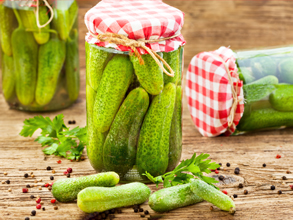Acetic acid & acetates
General information

Acetic acid is one of the most important organic acids in our lives. It is not only an important component in our metabolism, but also a stimulant and seasoning, as well as a raw material in industry. The oldest known biotechnological method for the production of acetic acid is the acetic acid fermentation by acetic acid bacteria, in which liquids containing ethanol are oxidized with the aid of oxygen and the enzymes of the acetic acid bacteria. The first processes for the production of synthetic acetic acid date back to 1913. Meanwhile, there are also processes in which so-called botanical acetic acid is produced during extraction from beech wood. The salts of acetic acid are called acetates.
Properties & advantages
Acetic acid (C2H4O2) is a clear, colourless, hygroscopic and pungent smelling liquid. Concentrated, pure acetic acid is a flammable liquid. It has a highly corrosive effect on eyes, skin and mucous membranes.
Acetic acid and its salts are of great importance as flavourings, acidifiers and microorganism inhibitors. The bactericidal effect of acetic acid consists in the fact that physiological processes are prevented by the changed pH value and also proteins denature.
Product qualities & use
Acetic acid and acetates are used in the food sector for fruit and vegetables in cans and jars, for fish in all variations, sour preserves, various marinades, delicatessen salads, mayonnaises, salad dressings or for preserving and washing fresh meat. In medicine, acetic acid and acetates are used as starting components in the production of medicines or as moisture-removing agents.
- Acetic acid 100% LQ, acetic acid 80% LQ - (E 260), Ph.Eur.
- Acetic acid 99/10% ch for pharmaceutical purposes.
- Potassium acetate anhydrous - E261
- Sodium acetate anhydrous - E262(i), USP, FCC
- Sodium diacetate - E262(ii), FCC
- Calcium acetate - E263, FCC, USP, Ph.Eur.
For acetic acid we have access to botanically and synthetically produced acetic acid.
Packaging
Acetic acid: full truck loads, 1000 kg IBC, 60 kg balloons and 30 kg canisters.
Acetates: Bagged goods from 25 kg, pallet acceptance.